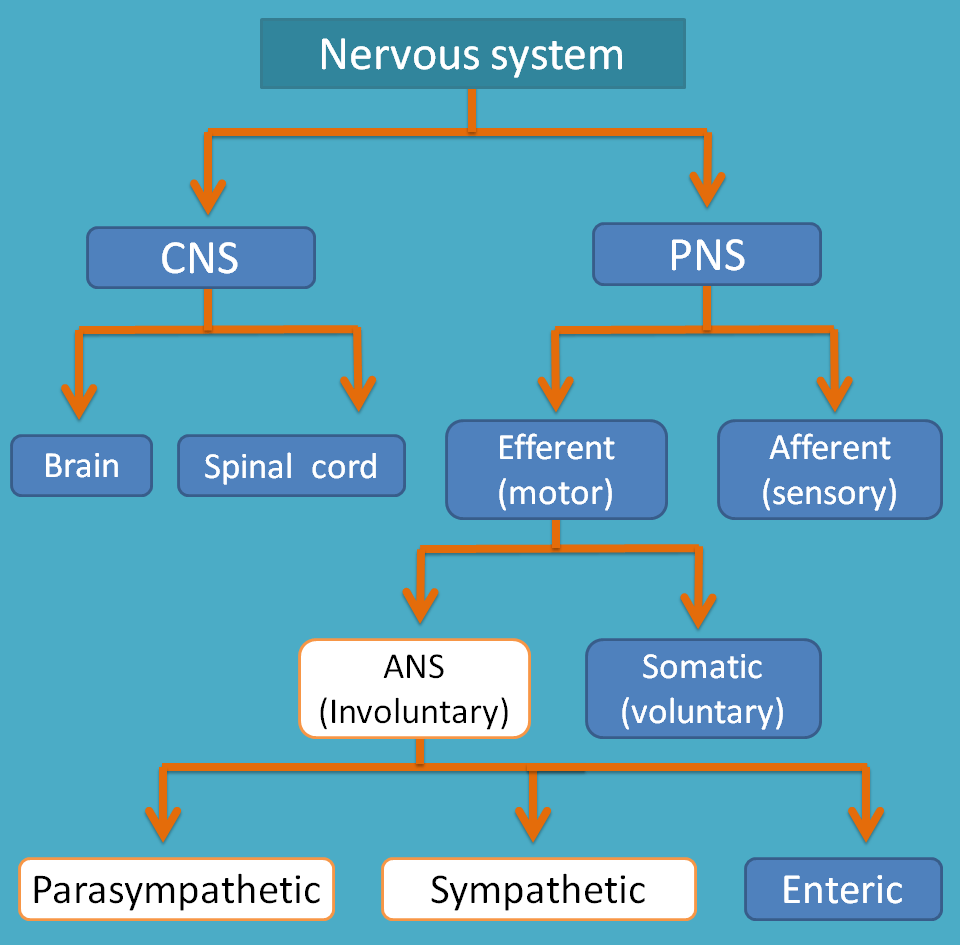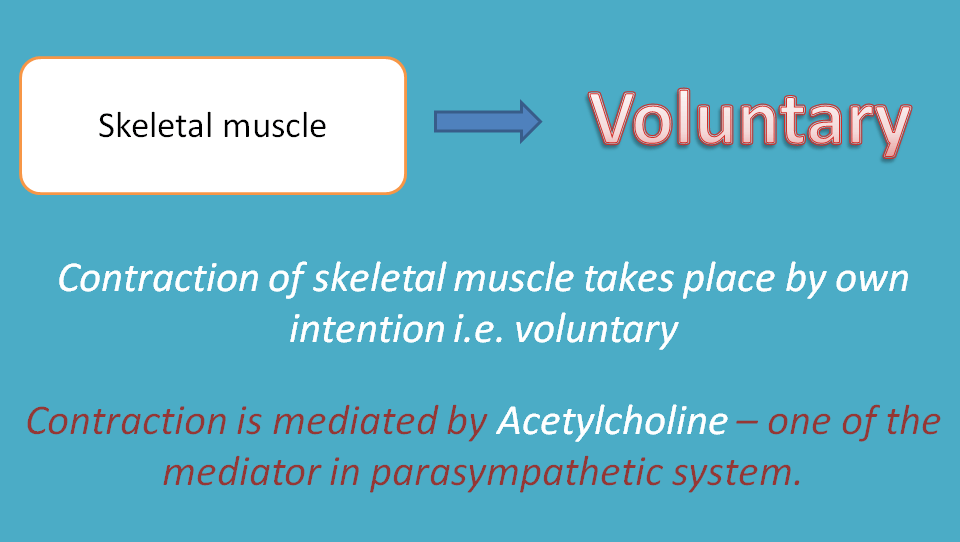Nervous system
Nervous system comprising all the neurons play an important role in our physiological system communicating with each every organ and integrating all the physiological functions. Your reading of this tutorial, your thoughts, actions and all your senses depend on the well organised signalling system falling under one roof called nervous system.
This nervous system can be divided into two components such as
- Central nervous system
- Peripheral nervous system
Central nervous system includes brain and spinal cord whereas peripheral nervous system is divided in to afferent and efferent divisions.

The efferent division is further divided into
- Somatic nervous system
- Autonomic nervous system
Somatic nervous system also called as voluntary nervous system that supplies to the skeletal muscle and as the name indicates its functions can be controlled voluntarily.

Autonomic nervous system also known as involuntary nervous system includes parasympathetic, sympathetic system and enteric nervous system and devoid of voluntarily control. Enteric nervous system is somewhat complex as it is controlled by various other mediators and local hormones and not considered here.
What is autonomic response?
As autonomic nervous system(ANS) also called as involuntary nervous system, many of the functions are independent and automated. How can we know which function is of ANS? Let's clarify by answering few questions below.
- Can you stop your heart beat?
- Can you stop your GI motility?
- Can you prevent your bronchioles to constict and relax?
- Can you prevent your bladder to constrict?
- Can you fix your pupil size equal at all the times?
- Can you smile for a happy moment?
Except the last one, for all above questions the answer is same i.e. "No, I can't."
These are the involuntary functions controlled by autonomic nervous system.
For the last question, the answer is "yes". You can smile by your own and can stop when needed".
This is a voluntary response mediated by skeletal muscle on the face.
Lets' discuss the basic terminology we use with nervous system in the next section.